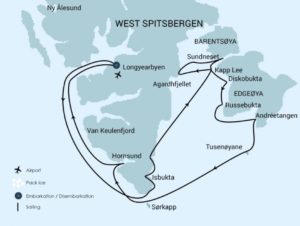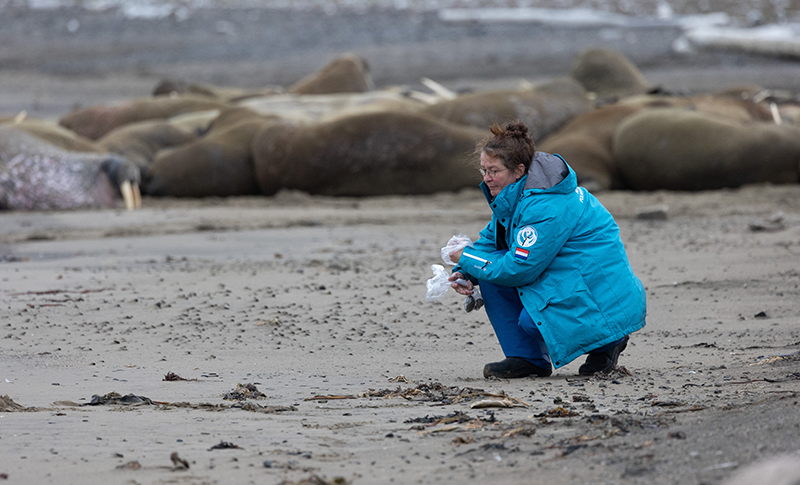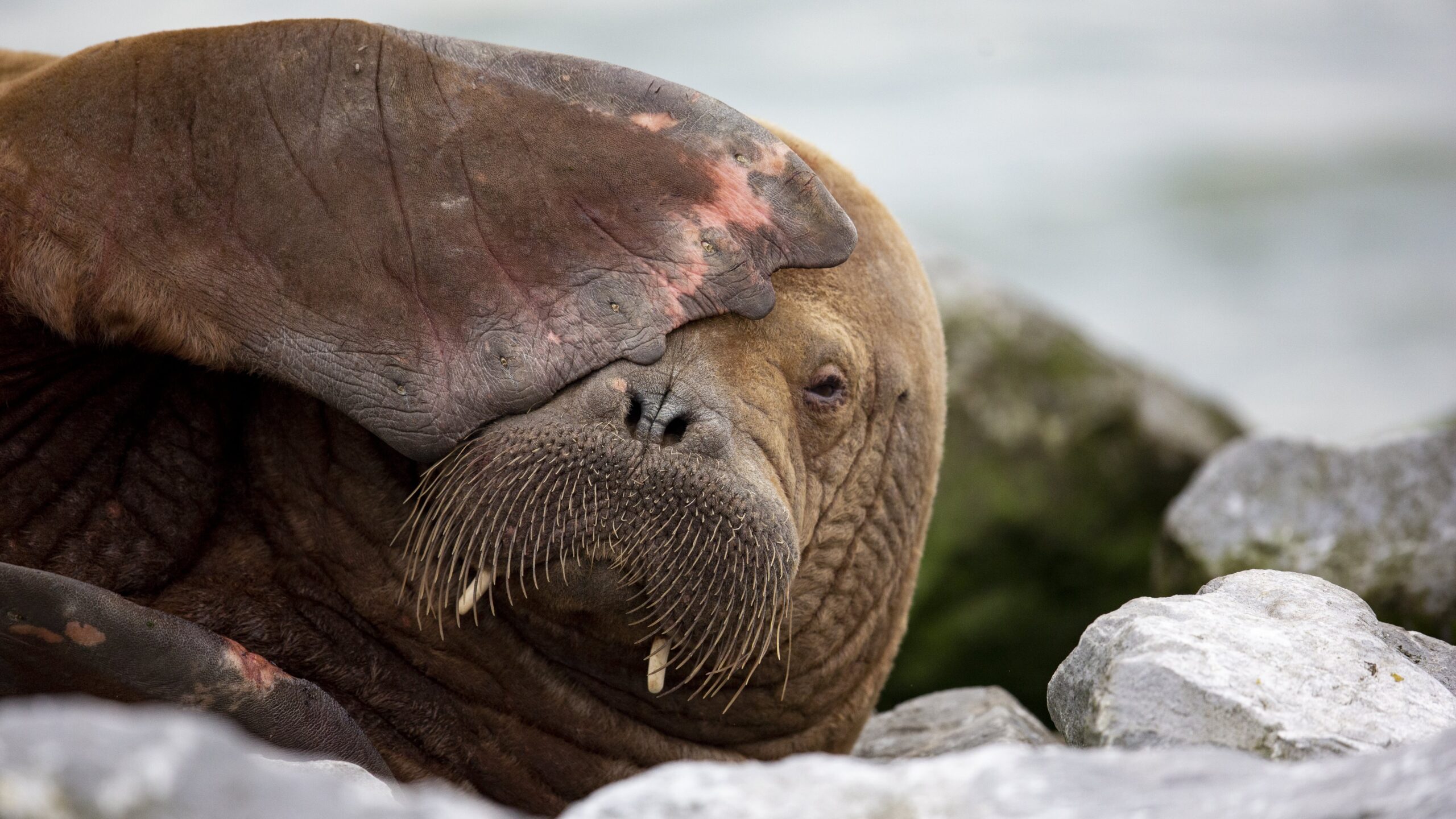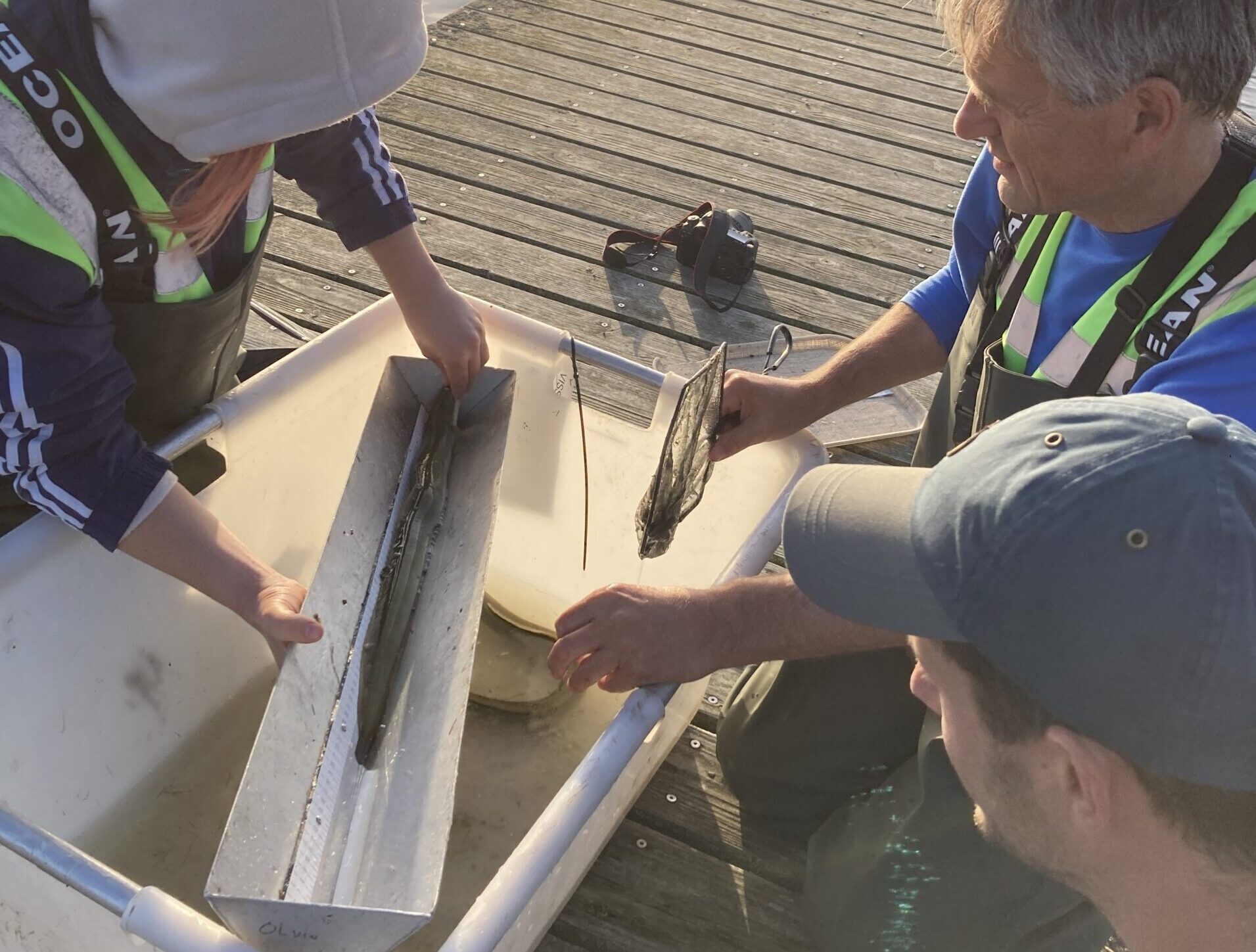This summer, a group of scientists spent 10 days studying the effects of climate change in the southeast part of the northern archipelago of Spitsbergen. They are back now, and Resource talked to two researchers from Wageningen Marine Research. Apart from concern about the changes taking place, their foremost feeling was awe at the wilderness they experienced.

‘I sat in the nicest spot on the ship, looking out over a sea covered in birds waiting to be counted.’ This is how Susanne Kühn, a bird researcher at Wageningen Marine Research, describes her experience of the Dutch expedition to Spitsbergen in July. She was one of the 50 scientists who travelled on the ship Ortelius, in the company of 50 tourists, to do research on climate change in the south-eastern part of the Norwegian archipelago. Most of the scientists have returned now, although some of their samples will only arrive in the Netherlands by ship in the autumn.
Kühn counted seabirds and marine mammals from the bow of the boat, where she had a small viewing hut with a bench and a table. Kühn could count whenever the boat was sailing. Because the scientists and tourists went ashore during the day and the boat could not sail then, she mainly counted at night. ‘That’s no problem when there are 24 hours of daylight. It is a beautiful feeling of solitude. You are alone with your birds, tired but very happy at the same time.’ She was helped occasionally by tourists or colleagues. Kühn’s counting sessions went on as long as the boat was moving and there was visibility, sometimes for six to seven hours. ‘I was able to put in a lot of hours.’
Polar bears
It was a different matter for researchers who had to go ashore for their work. There was no shortage of polar bears. One was sighted nearly every day and when that happened, they had to relocate to go ashore, for their own safety. But there was no disappointment in that for Sophie Brasseur, seal researcher and a colleague of Kühn’s at Wageningen Marine Research. ‘I loved the polar bears,’ she says. ‘I’d be happiest if there were be so many polar bears that we couldn’t go ashore at all, and for the area to be left in peace to defend itself against climate change as best it can. The increasing influx of tourists doesn’t help in that regard.’
Doing research with tourists on board is not optimal
She learned a thing or two from the previous research trip in 2015. ‘I realize that it is useful financially, but doing research with tourists on board is not optimal. Last time, the scientists had extensive plans but were given too little time because the tourists are entitled to their outing as well. So this time I set a minimal goal that can be achieved in a short time.’
She surpassed that goal and collected 13 walrus turds instead of the planned 10. At around 1000 kilos, the walrus is one of the largest species of fin-footed (seal-like) animal in the world. To collect the poo, she had to get very close to resting groups of about 50 animals. An overwhelming experience. ‘They are like trucks, such huge animals. They could gobble me up. That such giants can exist – precisely because we leave them alone – is astonishing.’
Frozen faeces
The walrus and other seals are the ‘thermometers’ of the Arctic, says Brasseur. ‘Seals are totally dependent on the sea, but they come ashore. You can see from them whether the system is changing. You can tell from their faeces what prey is available; you can tell if there is enough prey by how many pups they raise. They take samples from the sea for us.’ The droppings are frozen and will come to the Netherlands on the Ortelius in the autumn. Then the researcher will isolate the DNA of the walruses’ prey from the droppings and use eDNA techniques to see what the animals have eaten. She will compare that information with samples of marine life collected during the expedition in 2022 and faecal samples from the previous expedition in 2015.
Susanne Kühn’s counts provide another yardstick for the health of the Arctic. Apart from the walruses, she saw hardly any marine mammals from the observation hut on the bow. ‘There were very few where there used to be a lot. Hardly any whales, just the occasional blow from a large whale in the distance.’ Yet she cannot tell first-hand whether there has been any change, because she has not been to this part of Spitsbergen before herself. ‘It’s mainly what other researchers tell you. On the last expedition there was still sea ice, and now it has gone completely.’
Plan of attack
There were once thousands of walruses on Spitsbergen, but they were massacred for their ivory tusks about 100 years ago, Brasseur explains. Now their numbers are growing for two reasons: the population is recovering and walruses from the Arctic are migrating to Spitsbergen and other coasts because the sea ice is retreating. The melting sea ice is also creating new threats: more and more companies are encroaching on the archipelago. ‘Tourism, fisheries, oil companies and shipping can now make more use of the Arctic,’ Brasseur explains. ‘The governments of the polar regions should protect more areas for animals like walruses, because what if an oil tanker or container ship loses its cargo?’
Melting sea ice is creating new threats: more companies are encroaching on the archipelago
Brasseur thinks a new ‘plan of attack’ is needed for future expeditions. ‘What can Dutch scientists do for Spitsbergen and polar research? We must make sure that research fills the gaps in our knowledge better.’ The seabed and marine life in the polar regions, for example, has not yet been properly mapped. Brasseur: ‘Melting ice brings cold, fresh water into a saltwater system. We don’t know what the consequences of that will be.’ While the focus of this expedition was mainly on land and lakes, she would like to see the next one dive into the sea to identify those consequences.

 Sophie Brasseur collects walrus poo for eDNA analysis of their prey. Photo Susanne Küh
Sophie Brasseur collects walrus poo for eDNA analysis of their prey. Photo Susanne Küh 

